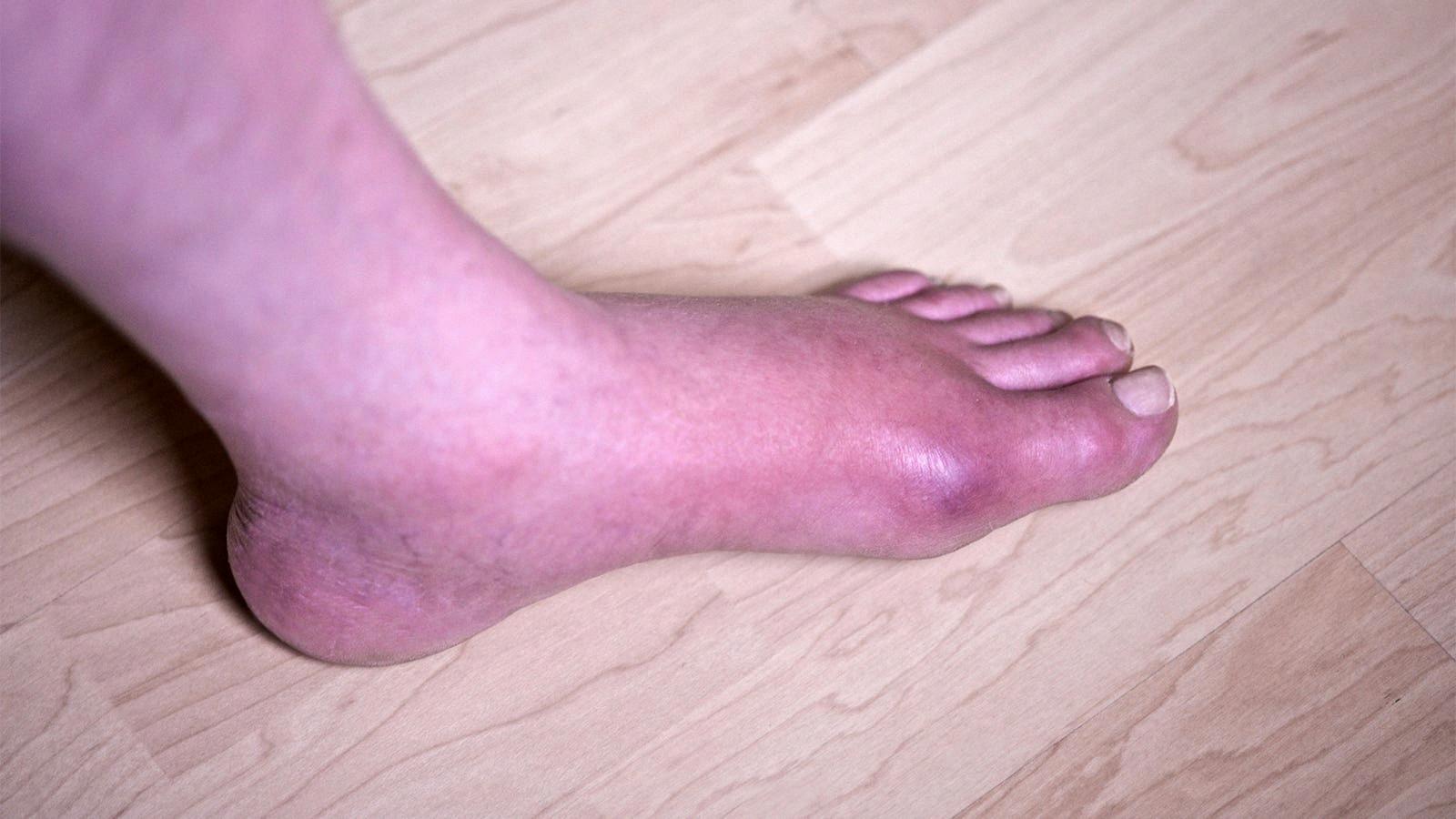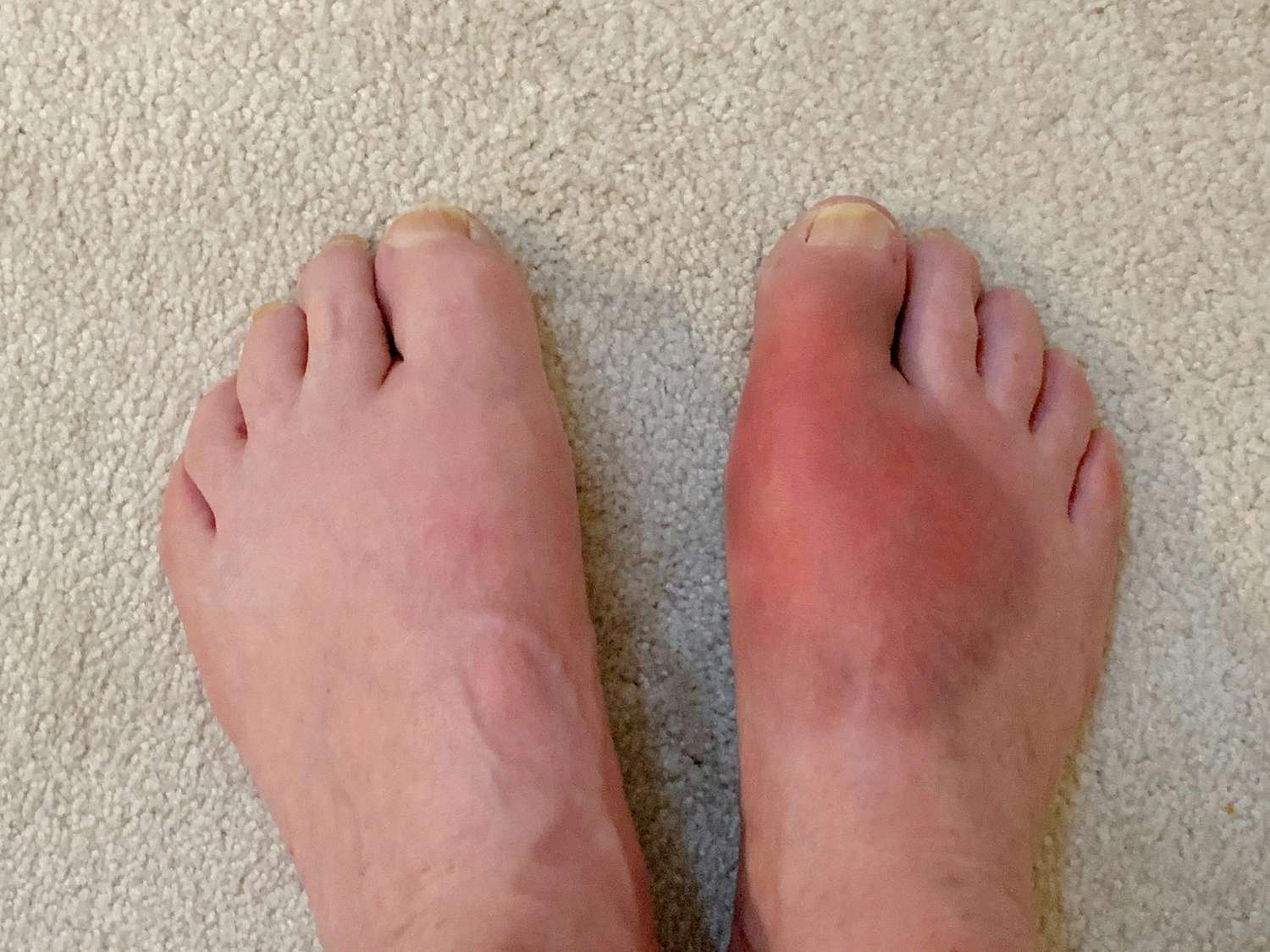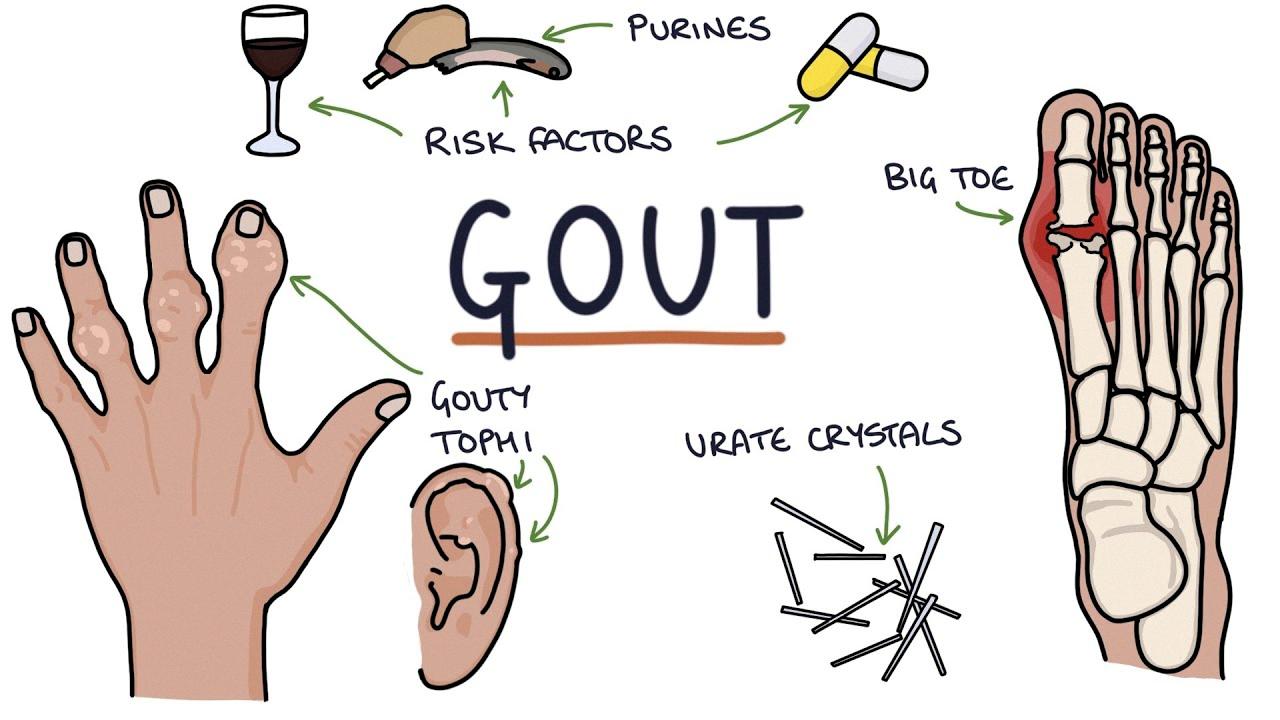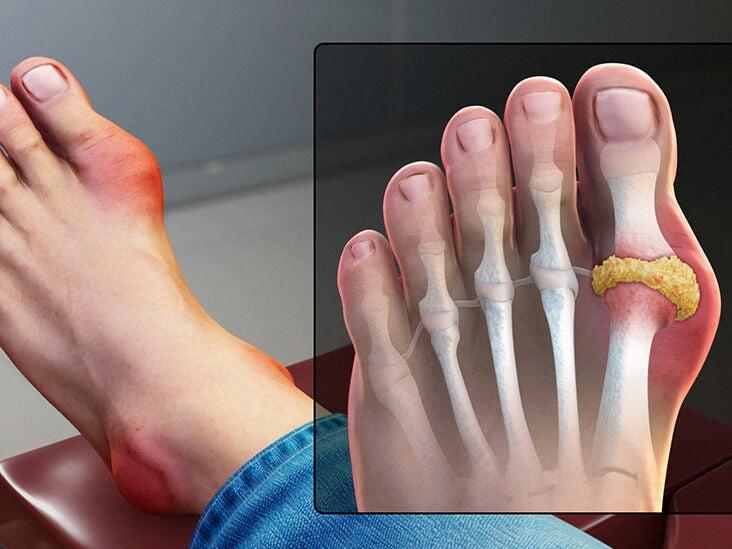Gout is a form of arthritis that can cause severe pain and inflammation in the joints, usually in the big toe joint. It occurs when there is a buildup of uric acid in the body, leading to the formation of urate crystals in the joints. Although gout can be managed with medication and lifestyle changes, many people woner if it is safe to walk with gout and whether walking can make the condition worse.
The good news is that walking is actually beneficial for people with gout. Walking is a low-impact exercise that can help to improve joint mobility and reduce pain and inflammation. It can also help to maintain a healthy weight, which is important for managing gout symptoms. However, if you are experiencing a gout flare-up, it is important to take care when walking and avoid putting too much weight on the affected joint.
During a gout flare-up, the affected joint may be swollen, red, and tender to the touch. Walking on the affected foot can exacerbate these symptoms and cause further pain and discomfort. To reduce the pressure on the joint, it may be helpful to use a walking aid such as a cane or crutches. This can help to distribute your weight more evenly and reduce the strain on the affected joint.
It is also important to avoid wearing tight or uncomfortable shoes when you have gout. Choose shoes that have a wide toe box and provide good arch support to help reduce pressure on the affected joint. Additionally, try to avoid standing or walking for extended periods of time, as this can put additional strain on the joint and exacerbate your symptoms.
In addition to walking, there are other lifestyle changes that can help to manage gout symptoms. It is important to avoid foods that are high in purines, such as red meat, organ meat, and seafood, as these can increase uric acid levels in the body. Alcohol, particularly beer and hard liquor, should also be limited or avoided, as it can increase uric acid production and worsen gout symptoms.
If you are experiencing a gout flare-up, your doctor may prescribe medication to help manage your symptoms. Nonsteroidal anti-inflammatory drugs (NSAIDs) such as ibuprofen or naproxen sodium can help to reduce pain and inflammation, while colchicine and corticosteroids may also be prescribed in more severe cases.
Walking is safe and beneficial for people with gout, but it is important to take care when walking during a flare-up. Use a walking aid if necessary and avoid putting too much weight on the affected joint. Additionally, make lifestyle changes such as avoiding trigger foods and limiting alcohol consumption to manage your symptoms and reduce the frequency of gout flare-ups. If you are experiencing severe symptoms, speak to your doctor about medication options to help manage your condition.
The Benefits of Walking and Resting for Gout Relief
When it comes to managing gout, it is generally better to engage in low-impact physical activity like walking rather than resting completely. Walking can help improve blood circulation, reduce joint stiffness, and increase joint flexibility, all of which can help alleviate gout-related pain and discomfort. Additionally, regular exercise can help maintain a healthy weight, which is important for managing gout as excess weight can exacerbate symptoms. However, it is important to listen to your body and avoid any activities that cause pain or discomfort. It is also advisable to consult with a doctor or a physical therapist to determine the most apropriate exercise regimen for your specific situation.

Source: medpagetoday.com
Managing Gout: How to Walk on Your Foot
When you have gout, walking on your affected foot can be quite painful. To minimize the discomfort, it is recommended to reduce weight on your foot and other weightbearing joints. One way to do this is by using a walking aid, such as a cane. Hold the cane in the hand opposite your affected foot, so that the joint is unloaded. This will help to minimize the pressure on the joint and reduce the pain wile walking. Additionally, wearing comfortable shoes with good arch support and avoiding tight-fitting footwear can also help to alleviate pain and discomfort while walking with gout. It is important to consult with a healthcare professional for proper diagnosis and treatment of gout, as they may recommend additional measures to manage your symptoms.
Effects of Aggravated Gout on the Foot
Gout is a type of arthritis that is caused by the buildup of uric acid crystals in the joints, which can lead to inflammation and intense pain. When it comes to gout in the foot, there are seveal factors that can aggravate the condition and trigger a flare-up. One of the primary culprits is a diet high in purines, which are substances found in certain foods that can increase uric acid levels in the body. Foods that are particularly high in purines include red meat, organ meat, and seafood. Alcohol consumption, particularly of beer and hard liquor, can also be a trigger for gout in the foot. Other factors that may aggravate gout in the foot include dehydration, stress, and certain medications such as diuretics and aspirin. It’s important for individuals with gout to work closely with their healthcare provider to develop an individualized treatment plan that addresses their specific triggers and helps manage their symptoms.
The Fastest Way to Get Rid of Gout
The fastest way to get rid of gout involves a combination of medications such as nonsteroidal anti-inflammatory drugs (NSAIDs), colchicine, or corticosteroids. NSAIDs, such as ibuprofen or naproxen sodium, are available over-the-counter and can help reduce pain and inflammation. Colchicine is a prescription medication that can also help relieve gout symptoms. Corticosteroids, such as prednisone, can be prescribed by a doctor to reduce inflammation and pain. However, it is important to note that these medications only provide temporary relief and do not treat the underlying cuse of gout. Long-term management of gout may include lifestyle changes, such as reducing alcohol and purine-rich foods consumption, and taking medication to lower uric acid levels in the blood. It is always recommended to consult with a healthcare provider for proper diagnosis and treatment of gout.
Breaking Up Gout Crystals
To break up gout crystals, there are a few approaches that can be taken. One option is to take medication such as allopurinol or febuxostat, which can lower the uric acid levels in the blood and prevent further crystal formation. Another option is to make dietary changes, such as reducing the intake of purine-rich foods like organ meats, shellfish, and red meat, and increasing the intake of low-fat dairy products, whole grains, and vegetables. Drinking plenty of water and other fluids can also help flush out the crystals. Additionally, applying ice or heat to the affected joint, and doing gentle exercises and stretches can help reduce inflammation and increase mobility. It is important to consult with a healthcare professional to determine the best coure of treatment for individual cases of gout.

Source: verywellhealth.com
The Four Stages of Gout
Gout is a type of arthritis that progresses through four distinct clinical phases. The first phase is asymptomatic hyperuricemia, in which uric acid levels in the blood are elevated but no symptoms are present. This phase can last for several years and is often discovered incidentally durig routine blood tests.
The second phase is acute gouty arthritis, which is characterized by sudden and severe joint pain, swelling, and redness. This typically affects the big toe, but can also occur in other joints such as the ankle, knee, or wrist. These attacks can last for several days to weeks and are often triggered by factors such as alcohol consumption, dehydration, or a high-purine diet.
The third phase is intercritical gout, which refers to the intervals between acute attacks. During this phase, there are no symptoms present and the patient may feel completely normal. However, uric acid levels remain elevated and there is a risk of future attacks.
The fourth and final phase is chronic tophaceous gout, which is the most severe form of the disease. In this phase, uric acid crystals accumulate in the joints and surrounding tissues, leading to the formation of tophi (hard, chalky deposits under the skin). These tophi can cause joint deformities, chronic pain, and decreased mobility. Chronic tophaceous gout is often seen in patients who have had uncontrolled gout for many years.
Staying Off the Foot with Gout: Is It Necessary?
If you have a gout flare-up in your foot, ankle, or knee, it is advisable to stay off your foot as much as possible. Further trauma to a joint with a gout flare can prolong the flare, making it more painful and longer-lasting. However, this does not mean you should avoid all exercise or physical activity altogether. It is stil essential to maintain an active lifestyle to manage gout symptoms effectively. Therefore, it is best to consult with your healthcare provider to develop a personalized exercise plan that accommodates your gout symptoms and minimizes their impact on your daily life.
The Benefits of Putting Your Foot Up for Gout
Putting your foot up can help relieve gout pain. When you elevate your foot above your chest level, it helps to reduce swelling and inflammation, which are common symptoms of gout. By doing so, it can also help to improve blood circulation in the affected area, which can further alleviate pain and discomfort. Moreover, keeping your foot elevated can also help prevent further complications, such as blood clots, which can occur due to reduced blood flow. Therefore, it is recommended to elevate your foot as much as possible when you are experiencing gout pain.
The Benefits of Wearing Shoes for Gout Sufferers
The answer to the question of whether wearing shoes can help with gout is not entirely clear-cut. On the one hand, wearing shoes that put pressure on the big toe joint, such as those with a pointy toebox, can exacerbate gout symptoms by compressing the joint and causing pain. Therefore, it is advisable to avoid shoes that are too tight or narrow in the toe area.
On the other hand, some experts recommend wearing shoes that provide good support and stability for the foot and ankle, as this can help reduce the risk of gout attacks. This is particulrly important for people who are overweight or have other underlying health conditions that can increase their risk of gout.
In general, it is best to choose shoes that are comfortable, well-fitting, and provide adequate support for your feet. This might mean opting for shoes with a wide toebox, cushioned soles, or orthotic inserts, depending on your individual needs. Ultimately, the goal is to reduce pressure on the affected joint and promote healthy foot mechanics, which can help prevent gout attacks and alleviate symptoms.

Source: youtube.com
The Most Common Trigger for Gout
The number one trigger for gout is elevated levels of uric acid in the blood, which can be caused by various factors including eating a diet rich in red meat and shellfish, consuming beverages sweetened with fructose, and excessive alcohol consumption, particularly beer. When uric acid levels become too high, it can form needle-like crystals in the joints, leading to severe pain and inflammation, which are characteristic symptoms of gout. Therefore, it is important to avoid or limit the intake of these trigger foods and drinks to prevent the onset of gout or manage its symptoms.
What to Avoid When Dealing with Gout
If you have gout, thee are certain things you should avoid doing to prevent worsening of the condition or triggering an attack. Firstly, it is important to avoid consuming alcohol during a gout attack as it can lead to dehydration and increase the level of uric acid in your blood, which can worsen the symptoms. Even in between attacks, it is recommended to limit alcohol consumption, especially beer, as it is high in purines that can lead to uric acid buildup.
Another thing to avoid is consuming sugary foods and beverages. This includes sweetened cereals, bakery goods, candies, and fruit juices that are high in added sugars. Sugary foods can increase insulin levels and lead to inflammation, which can worsen gout symptoms.
It is also important to limit or avoid consuming foods high in purines such as organ meats, seafood, red meat, and some vegetables like asparagus and spinach. These foods can lead to uric acid buildup in the body, which can increase the risk of gout attacks.
Furthermore, dehydration can worsen gout symptoms, so it is important to stay hydrated by drinking enough water and other non-sugary fluids. Lastly, it is important to avoid smoking as it can increase the risk of gout and worsen the symptoms. By avoiding these things, you can help manage your gout and prevent future attacks.
Duration of a Bout of Gout
A gout attack typically lasts for around 7-14 days, even without treatment. The peak of the attack usually occurs 12-24 hours after onset, and then it gradually resolves over time. It is important to note that the duration of a gout attack may vary depending on the severity of the symptoms and the underlying medical conditions of the patient. While treatment can help alleviate the symptoms and shorten the duration of the attack, it is crucial to consult a healthcare professional for proper diagnosis and management of gout.
What Beverage Can Help Relieve Gout Symptoms?
While there is no single drink that can completely cure gout, drinking water and coffee can be helpful in managing the condition. Drinking plenty of water can help flush out excess uric acid in the body, which is one of the main causes of gout. It is recommended to drink at least eight 8-ounce glasses of water per day, and even more durng a gout flare-up.
In addition to water, drinking coffee can also help lower the risk of gout. Regular, caffeinated coffee has been shown to have a protective effect against gout, possibly due to its ability to lower uric acid levels in the blood. However, it is important to note that excessive coffee consumption can have negative health effects, so it’s best to drink it in moderation.
While there is no miracle drink that can cure gout, incorporating plenty of water and moderate amounts of coffee into your diet can be helpful in managing the symptoms of gout and reducing the risk of future flare-ups.

Source: medicalnewstoday.com
The Benefits of Soaking in Hot Water for Gout Relief
Soaking in hot water may not be the best approach for treating gout. Gout is a type of arthritis that results from the accumulation of uric acid crystals in the joints. The inflammation and pain associated with gout attacks can be intense and debilitating. The recommended treatment for gout often involves reducing inflammation, which can be achieved though various methods. However, soaking in hot water may not be the most effective method for reducing inflammation in gout.
In fact, hot water can actually exacerbate inflammation in gout by increasing blood flow to the affected area, which can cause more swelling and pain. Cold water is often recommended for reducing inflammation and pain in gout. Cold water can help constrict blood vessels and reduce swelling, which can provide relief from gout symptoms. Ice packs may also be effective in reducing inflammation and pain in gout.
Alternating between hot and cold water may also be helpful in reducing inflammation and pain in gout. This method, known as contrast hydrotherapy, involves alternating between hot and cold water for several minutes at a time. The hot water helps increase blood flow, while the cold water helps reduce inflammation. This can help provide relief from gout symptoms.
Soaking in hot water may not be the best approach for treating gout. Cold water, ice packs, and contrast hydrotherapy are often recommended for reducing inflammation and pain in gout. It is important to consult with a healthcare professional for proper diagnosis and treatment of gout.
The Effects of Drinking Water on Gout Flare-Ups
Drinking water can help to prevent and alleviate gout flare-ups. Gout is a type of arthritis that occurs when uric acid crystals build up in the joints, causing pain, swelling, and inflammation. Drinking plenty of water can help to flush out excess uric acid from the body and prevent the formation of uric acid crystals. It is recommended to drink at least 8 glasses of non-alcoholic beverages a day, with plain water being the best choice. If you are experiencing a gout flare-up, increasing your water intake to 16 glasses a day can help to alleviate symptoms and reduce the duration of the flare-up. However, it’s important to note that drinking water alone may not be enough to manage gout, and oher lifestyle changes and medical treatments may also be necessary.
Conclusion
Gout is a form of arthritis that can caue severe pain and discomfort in the joints, particularly the big toe joint. While it can be a chronic condition, there are several treatments available to manage gout and reduce the risk of flare-ups. Nonsteroidal anti-inflammatory drugs, colchicine, and corticosteroids are common medications used to manage gout symptoms. In addition to medication, lifestyle changes such as avoiding purine-rich foods and limiting alcohol intake can also help reduce the frequency and severity of gout attacks. Engaging in joint-friendly activities like walking can also help improve gout-related pain. If you suspect you have gout or are experiencing symptoms, it’s important to consult with a medical professional for diagnosis and treatment. With proper management, individuals with gout can lead active and healthy lives.
